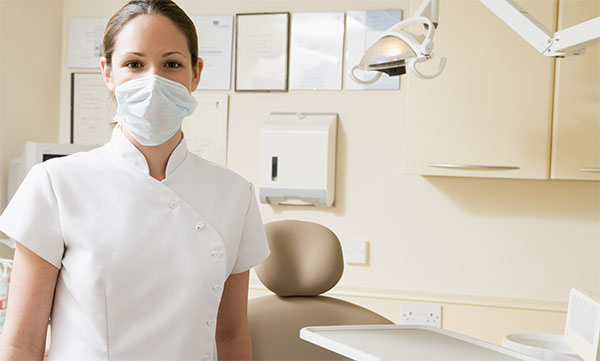Chronic non-healing multiple ulcers
Non-healing single or multiple ulcers of the oral mucosa may be encountered in dental practice. Most of these have an underlying immunological or autoimmune cause and may be associated with lesions on the skin or other mucosa (e.g., eyes, genitals, upper aerodigestive tract). It is important to recognize, diagnose, and treat these ulcers; to refer these patients for management of pain and functional difficulties (e.g., speech, nutrition, communication, drooling, insomnia); and to rule out more serious or even potentially fatal conditions.
Presentation
Population
Can affect any age group or gender; however, most commonly seen in patients aged 35–65 years.
Signs
- Asboe–Hansen sign; on applying pressure bulla enlarges to involve the normal surface.
- Nikolsky sign; vertical or lateral pressure may cause new blister formation.
Symptoms
Oral:
- Pain severity: pain and burning sensation may range from mild to severe depending on the extent of lesions, which will lead to functional difficulties in opening mouth
- Shallow, irregular oral ulcers sometimes preceded by blisters that are thin, flaccid, and tense
- Gingivitis that is non-responsive to plaque removal and susceptibility to desquamation or peeling after physiologic pressure is applied (desquamative gingivitis)
- Bleeding
- Generalized oral mucositis
- Presence of white and red striae in oral cavity
- Extensive lesions associated with dehydration or weight loss
Skin:
- Thin walled bullae that ruptures, leaving behind ulcers
- Pruritus
- Possible involvement of eyes and genital mucosa
- In case of esophageal mucosal involvement, patients might have dysphagia
Investigation
- Detailed dental and medical history:
- Ask about the onset, progression, or regression of ulcers.
- Ask whether ulcers were preceded by blisters.
- Ask for any lesions or discomfort in eyes, genitals, skin, nose, or esophagus.
- If it is a painful condition, ask about the onset and nature of the pain and how the patient is coping with it.
- Ask about any history of drug intake or recent restoration.
- Ask about history of photosensitivity.
- Ask about fever (because of secondary infection).
- Ask about any medical illnesses or conditions.
- Ask about any allergies
- Ask about the onset, progression, or regression of ulcers.
- Perform a complete extraoral and intraoral examination (examine all oral mucosal surfaces).
Extraoral Exam:- Examine the skin of the head, neck, and exposed extremities.
- Inquire about non-visible lesions (e.g., genital mucosa, covered skin).
Intraoral Exam:- Inspect the ulcer(s) and note the size, shape, number, location, borders, floor, and surrounding areas.
- Palpate the ulcer(s) with a gloved finger to check for any tenderness, bleeding, base, and induration (firmness) around the ulcer and whether new blisters can be formed (e.g., Asboe–Hansen sign, Nikolsky sign).
- Tests:
- Biopsy that may include consideration of appropriate tissue preservative for direct or indirect immunofluorescence.
- Blood tests (requested by oral medicine specialists or by patient's physician).
- Photographic documentation, especially if the lesions are episodic.
Diagnosis
Based on the clinical examination, history, and biopsy (if available), a diagnosis of chronic multiple ulcers is determined.
- Chronic non-healing multiple ulcers preceded by blisters mainly involve pemphigus and pemphigoid (pemphigus can most certainly affect the skin and less frequently the eyes.)
- Chronic non-healing multiple ulcers associated with striae mainly involve lichen planus or lichenoid mucositis that may be part of an autoimmune process or contact hypersensitivity (e.g., dental materials, oral hygiene products, foods).
- Biopsy and immunofluorescence, together with clinical correlation, should be considered as the gold standard for establishing a definitive diagnosis, as the clinical and histologic features of these lesions are overlapping and confusing.
- A more rigorous diagnostic process may require referral to dental specialists (e.g., oral medicine and pathology specialists, oral and maxillofacial surgeons, periodontists, or medical specialists (e.g., dermatologists, dermatopathologists, internists)
Treatment
Common Initial Treatments
- Oral hygiene instructions, topical anesthetics, and antibacterial mouth rinses may be given to avoid secondary infections.
- If there is dehydration and weight loss, nutritional supplements and electrolytes may be considered.
- Topical corticosteroid:
- Elixir of dexamethasone, a potent anti-inflammatory agent (0.5 mg/5 mL)
- Disposable 100 mL bottle
- Rinse with 1 teaspoonful for 2 minutes 4 times/day; do not swallow.
- High-potency topical steroids, like clobetasol (0.05%), can also be prescribed.
- Disposable 15 g tube
- Apply locally 4–6 times/day
- Elixir of dexamethasone, a potent anti-inflammatory agent (0.5 mg/5 mL)
Advice
- If patients have photosensitivity or contact sensitivity, then sunscreens and allergy testing need to be performed.
- If patients are allergic to some dental materials, use alternative restorative materials for fillings.
Suggested Resources
- Silverman S, Eversole LR, Truelove E. Essentials of Oral Medicine. BC Decker publication; 2002.


